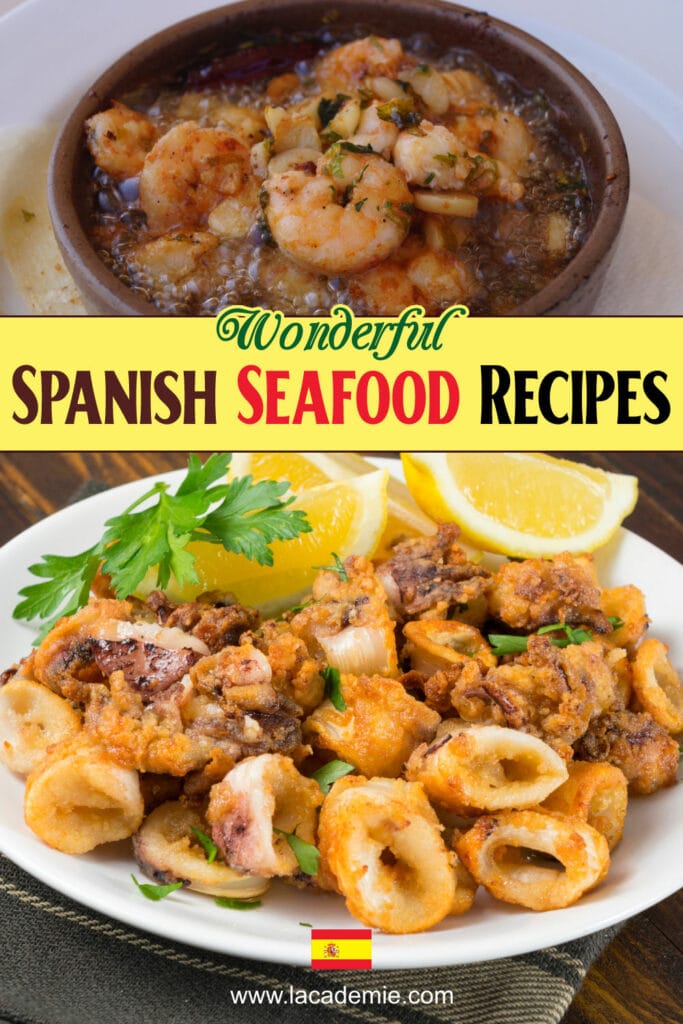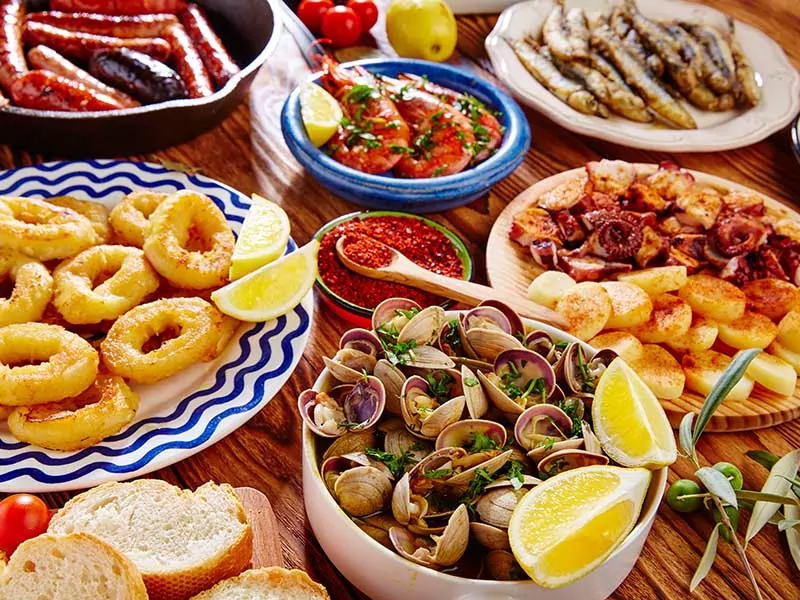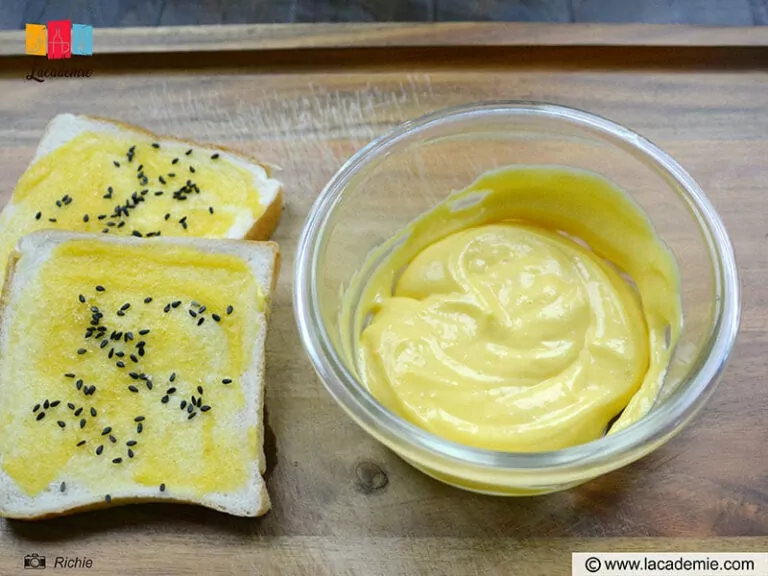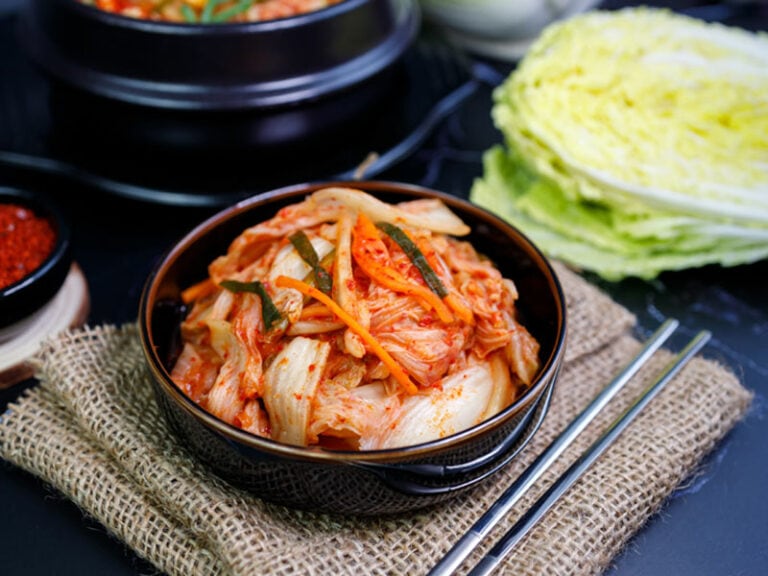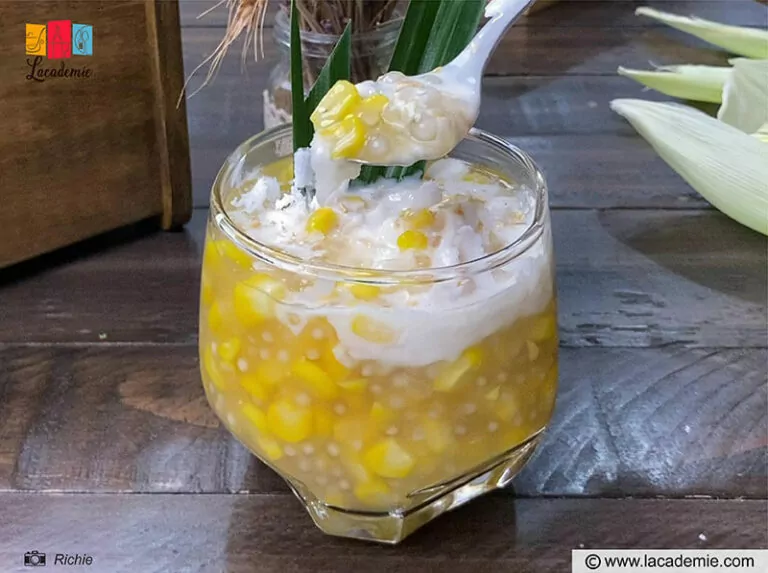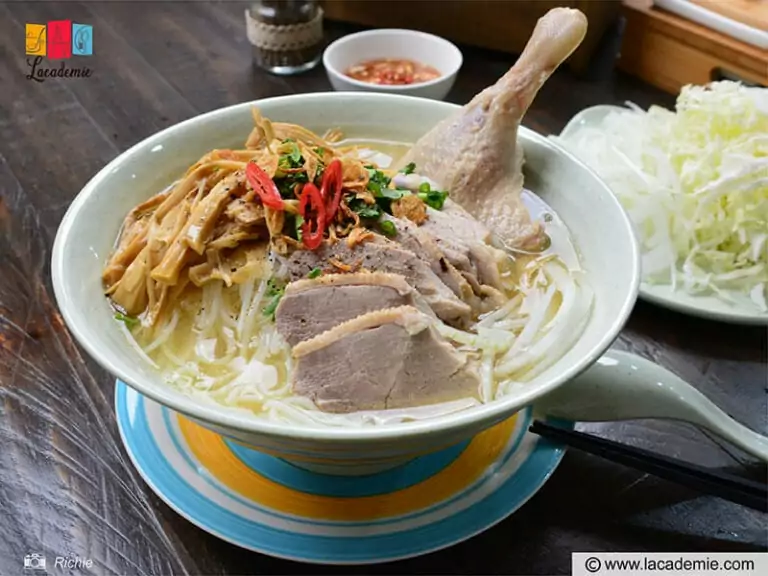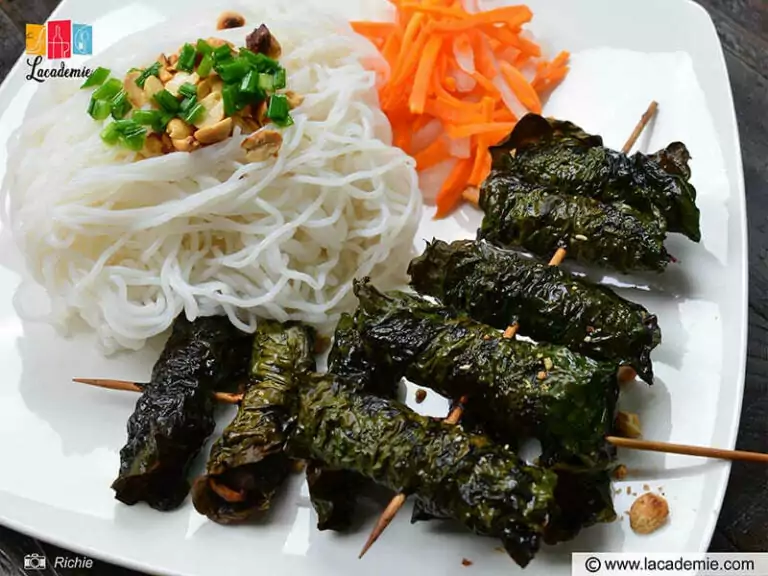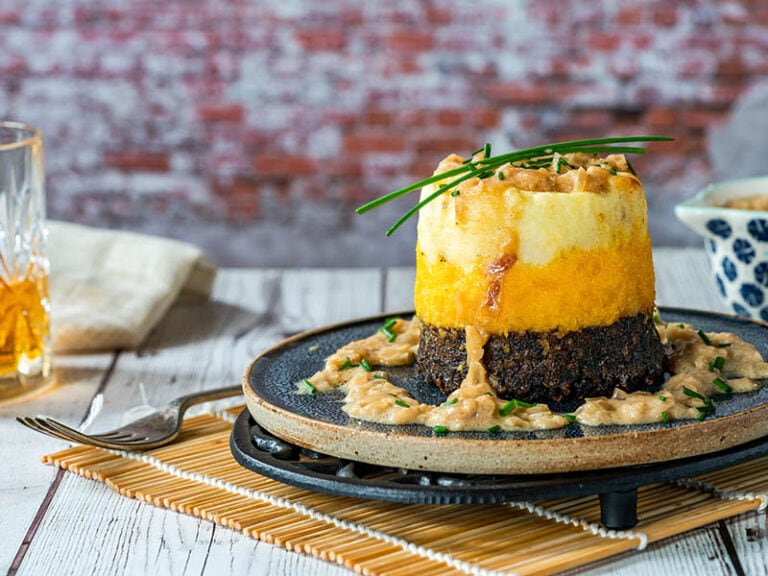It’s undeniable that Spanish seafood recipes benefit greatly from Spain’s advantageous geography. With two sides facing the Mediterranean and one facing the Atlantic ocean, Spain has an endless supply of seafood.
It’s no wonder that some of the most beloved Spanish delicacies contain a lot of fish, shrimp, and clams. Not only that, different Spanish regions will often add their flair to these dishes, creating a more diverse cuisine
With that said, I want to take this opportunity to show you some of the iconic Spanish dishes. This will hopefully keep your mealtime from becoming repetitive. Without further ado, let’s jump right in.
From main dishes to appetizers, this list of recipes from Spain has them all. On top of that, the cooking process is also straightforward. That means you don’t have to spend a lot of time and still get the most flavors out of these recipes.
1. Spanish Garlic Shrimp (Gambas Al Ajillo)
Total time: 5 minutes
One of the most interesting parts of Spain’s gastronomy is Tapas, which is the country’s version of appetizers/side dishes. Gambas Al Ajillo, or Garlic Shrimp, is a notable Spanish starter that many Spaniards love to enjoy.
This is quite simple to make with only three core ingredients: shrimp, chopped garlic, and olive oil. First, you need to peel and devein the shrimps. Then, saute the garlic in olive oil until the garlic turns golden. After that, add the shrimps and season.
You know Gambas Al Ajillo is ready when the shrimps turn a nice and glossy orange. You can have this with a side of toasted Spanish bread. The shrimps are chewy but not hard. It has a nice fragrance thanks to the garlic and olive oil.
You can make a simple plate of Gambas Al Ajillo with this recipe.
2. Salt Cod Croquette (Croquetas De Bacalao)
Total time: 30 minutes
In the 17th century, a French chef named François Massialot introduced the Croquette in Europe. And soon, this French specialty began to spread to other countries. Being next to France, Spain also adopted the dish and named it Croquetas.
In this particular version, I will help you make the Croquetas de Bacalao, which means Salt Cod Croquette. The main ingredients are salt cod, potatoes, and rice flour. First, soak the cod for 24 to 48 hours to get rid of the salt. Next, simmer the cod and shred it into pieces.
Then, mix the mashed potatoes with cod, flour, and seasoning to form a batter. When the batter is cool enough, deep-fry it in hot oil. When the Croquetas become crispy, remove them from the skillet. The mashed potato has a creamy consistency that blends nicely with salty cod.
3. Fried Squid Ring (Calamares Fritos)
Total time: 40 minutes
Calamari or Fried Squid Ring is a Mediterranean specialty that’s available all over Europe. That’s why Spain also has its own version called Calamares Fritos. It’s a popular light snack in Spain in most Tapas bars.
Let me show you how to make it. First, prepare the squids by slicing them into rings and marinate in lemon juice. This will make the squid rings become tender. Before frying, dip the squid into seasoned flour and a milk batter.
When you see that the rings turn golden, with a crust forming outside, remove the Calamares Fritos from the oil. You can serve this with lemon wedges or Aioli sauce (consisting of olive oil and garlic). The outer layer of Calamares gives a nice crunch, but the inside is not tough at all.
4. Salt Cod Salad (Remojon)
Total time: 30 minutes
Remojon, or Salt Cod Salad, is a staple Spanish salad dish from the southern region, particularly in the city of Granada. This is a perfect plate of salad if you want something refreshing during many hot summer months.
For the preparation, you can get the following ingredients: salt cod, orange, and olive oil. To make this salad, you have to reduce the salt level of the cod by soaking it in water. Next, peel the orange and add it to the salt cod. Finally, you mix everything with olive oil.
This goes well with Spanish ham and olives on top. With the cod, you can still taste a bit of saltiness from the meat. However, the orange offsets the saltiness well with its sourness and a light sweetness.
5. Spanish Tuna And Tomato Salad
Total time: 10 minutes
Who says that seafood has to be complicated? This entry will show you a simple yet tasty seafood dish that you can whip up any time of the day. The best thing about Spanish Tuna and Tomato Salad is that it only requires simple ingredients.
What you will need is ventresca tuna (which is a luxurious type of canned tuna in olive oil), tomatoes, and onions. If you don’t have ventresca tuna, I can suggest more standard types of canned tuna instead.
First, you just cut the tomatoes into thin wedges. After that, arrange the tomatoes on a plate. Add a bit of salt and olive oil to taste. Finally, you just place the tuna on top.
This dish goes well with a slice of toasted Spanish baguette. Despite being a simple salad, the seasoned tomatoes offer a unique umami flavor. The ventresca tuna has a herbal aroma that complements the umami even more.
6. Seafood Paella (Paella De Marisco)
Total time: 55 minutes
If you ask Spaniards what their national food would be, most probably would say Paella. Despite originating from the region of Valencia, this rice dish has quickly taken over the country with its fantastic ingredients and flavors.
For this recipe, I want to show you the Paella De Marisco (Seafood Paella) variant. The core ingredients are rice, chicken stock, and various seafood of your choice. First, you saute the rice. Next, add the chicken stock and let it simmer for a while before adding the seafood.
When you see that the rice puffs up, it is ready to serve. From the rice alone, you can already taste all of that seasoning. The seafood releases a lot of its sweetness to make the broth even more delectable.
For a cold day, this Seafood Paella recipe will warm you up.
7. Spanish Boiled Octopus (Pulpo A La Gallega)
Total time: 50 minutes
If you want a truly special specialty, let me introduce you to the Pulpo A La Gallega or Polbo A Feira. This is a simple Galician delicacy, with the main ingredient being boiled octopus. Despite the simplicity, you have to know how to do it for the meat to become tender.
To recreate Pulpo A La Gallega, you should get octopus, seasoning, and olive oil. First, you boil the octopus in a pot of salted water. Make sure to lower the heat. Then, turn off the heat to let the octopus cool down a bit. If you see the meat becoming soft, take the octopus off.
Slice the octopus into smaller pieces and plate them. Sprinkle salt, paprika, and olive oil all over the meat. Pulpo A La Gallega goes well with a side of potatoes. With this method, you won’t have any trouble biting through the meat. The seasoning makes the octopus more flavorful.
8. Spanish Fried Anchovies (Boquerones Fritos)
Total time: 17 minutes
Boquerones are a type of appetizer that you can eat in a lot of Spanish bars. In most cases, this delicacy is just marinated anchovies that no longer have their pungent smell. However, I want to show you another variant of this called Boquerones Fritos, or Fried Anchovies.
To recreate this dish, you must have the following: anchovies, flour, and cooking oil. You can remove the heads and guts of the fish yourself, or you can ask your local fishmonger to do it. Then, coat the anchovies on all sides with flour.
Heat the oil on a skillet and deep-fry the fish. When you see the skin has crisped up, remove them. Sprinkle a bit of salt and lemon to taste. Boquerones Fritos take no time at all. The crunchy texture and light seasoning are enough to satisfy your craving.
9. Spanish Seafood Stew
Total time: 45 minutes
Hailing from the region of Catalonia, specifically, the city of Barcelona, this type of Spanish stew is available in many seafood restaurants. Aside from common ingredients like fish and shrimp, you can also go for clams, crabs, or any seafood that you like.
Similar to other types of seafood stew, you can clearly taste the freshness of the sea. Thanks to the stewing process, the seafood releases a lot of its juice, imparting a distinct sweetness to the broth. There is a hint of fishiness to it, but it’s complementary to the flavor.
Aside from the natural taste, the seasoning for the stew includes paprika and saffron. The paprika has a kick that will stimulate your taste buds while the saffron gives a mellow and herbal aroma. This stew often goes well with bread.
10. Seafood Pasta Paella (Fideuà)
Total time: 1 hour
You can consider Fideua as a cousin of Spanish Paella. Its origin is from the Valencia region. The biggest difference between Paella and Fideua is that standard Paella has rice while most Fideua recipes utilize pasta noodles.
The other main ingredients still stay mostly the same, with mussels and prawns as the seafood ones. This Spanish dish also has chicken meat and chicken stock that will give the broth a super-rich texture due to the fat.
After you’re done with the cooking process, you can have the Fideua with a side of Aioli sauce. This sauce consists of garlic and olive oil mixed together. It’s similar to mayonnaise but not as thick. Toasted bread is also a good option for a side dish.
Seafood and noodles can combine to create a tasty pan of Fideua.
11. Spanish Tuna Stew (Marmitako)
Total time: 55 minutes
In this entry, I want to introduce a staple that comes from both the Basque Country and Cantabria regions. Marmitako, or Spanish Tuna Stew, will surely make your mouth water with its fresh and delectable ingredients.
So what will you need to cook this? The most important is fresh tuna and fish stock for a deep seafood flavor. Not only that, but the recipe also requires vegetables like bell peppers, potatoes, and tomatoes. These will enrich the stew even further.
First, add the fish stock with chopped vegetables into a pot. When the broth simmers a bit, you add the fish. The veggies go first since they take a much longer time to cook. You can add paprika and salt to taste. When the vegetables become tender enough, serve the stew on a plate.
12. Fried Salt Cod (Bacalao Pil Pil)
Total time: 20 minutes (Soaking time for salt cod: 24 hours)
Another delicacy from northern Spain that I encourage you to check out is Bacalao Pil Pil, or Fried Salt Cod. While it doesn’t have as many ingredients as the other recipes, this dish will still take some skill to master.
The main selling point of Bacalao Pil Pil is the salt cod. You must remember to soak the cod to get rid of excess salt, or the fish will be near inedible. After soaking it, you cut the fish into smaller portions before frying it with olive oil.
An interesting thing about Bacalao Pil Pil is that when you’re frying, the fat from the codfish will infuse with the oil to create a creamy sauce. This sauce has a mild saltiness and a slight fattiness from the fish fat. Rice and bread are a great accompaniment to Bacalao Pil Pil.
13. Sailor’s Clams (Almejas A La Marinera)
Total time: 30 minutes
Almejas A La Marinera, or Sailor’s Clams, is a typical starter for many Spanish feasts. It might seem simple at a glance, but this delicacy will surprise you with how much of that seafood goodness it packs inside.
The current recipe needs you to get cherrystone clams. However, you can diversify the dish by using different seawater clams as well. First, steam the clams to improve the texture. When the clams open up, drain them but keep the water.
Next, saute the clams with garlic and onions in a skillet. Add saffron and paprika into the mix. The herbal fragrance of saffron and the spiciness from paprika increase the flavors. Pour in the clam broth with a mixture of flour and water to thicken it up. You can enjoy the dish with bread.
14. Galician Empanada (Turnover Pastry)
Total time: 1 hour
If you’re familiar with Latin American cuisine, chances are you might have come across Empanada, a type of turnover pastry with a savory or sweet filling. However, did you know that the original recipe from the region of Galicia, Spain, has a totally different look?
Instead of the puffed-up half-moon shape, this version resembles a flat meat pie. Except for the shape, there is nothing different about the dough. You still need flour, water, and olive oil to create the crusty and irresistible outer layer of the Galician Empanada.
The filling just includes canned tuna. However, when you mix the tuna with the tomato, the umami will hide the fishiness. Other than the tomatoes, you can use paprika, sugar, and black to enhance the savoriness of the tuna.
Galician Empanada is not that difficult to make for you and your family.
15. Leek And Salt Cod Soup (Porrusalda Vasca)
Total time: 3 hours (plus soaking the salted codfish)
The final recipe is a Spain-styled soup called Porrusalda or Leek And Salt Cod Soup. It comes from the Basque Country region in the north. From the warm broth to the hearty fish, this soup will fill you up with energy when you feel like slowing down.
The essential ingredients in this soup are fish broth and salt cod. The broth is rich, while the cod offers a subtle savoriness after being soaked in water. This blend of flavors seeping into the vegetables, including potatoes and leeks, helps elevate the dish even more.
As a soup, there are many ways you can have it. You can serve Porrusalda as an appetizer, or it can be a good main course with a side of bread or rice. The bread or rice can soak up the good juice to distribute the aroma of broth evenly.
An Ocean of Seafood Delights From Spain
With the benefits of being surrounded by water on three sides, Spain has a very developed seafood menu across Europe. And one of the best aspects about this side of Spanish cuisine is that they use all sorts of seafood, instead of just fish.
From deep-fried dishes to soup and pasta, there will always be a Spanish-inspired recipe for you. With a little bit of effort and the right kind of creative mindset, your meals will never stay the same again.
Thank you for accompanying me on this journey through the Spanish menu. Of course, this is not the end because I will see you very soon. Until then, if you like the article above, don’t hesitate to fistbump those like and share buttons. See you around!
Nutrition Facts
2 servings per container
- Amount Per ServingCalories855
- % Daily Value *
- Total Fat
22.1g
34%
- Saturated Fat 3.6g 15%
- Cholesterol 931mg 311%
- Sodium 2702mg 113%
- Potassium 1360mg 39%
- Total Carbohydrate
28.4g
10%
- Dietary Fiber 4.7g 16%
- Sugars 10.4g
- Protein 127.1g 254%
- Calcium 252%
- Iron 33%
- Vitamin D 9%
* The % Daily Value tells you how much a nutrient in a serving of food contributes to a daily diet. 2,000 calories a day is used for general nutrition advice.
